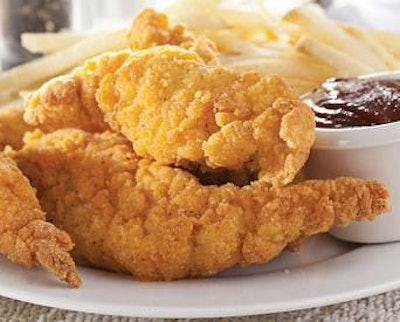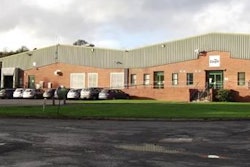
Speaking at the 2013 Poultry Processor Workshop, Keith Rhodarmer, complex manager, Koch Foods, shared tips for achieving superior results in the battering and breading of poultry.
First, understand the customer requirements and consult with poultry further processing experts. Then, execute the following nine steps to produce superior product quality, proper yield and satisfied customers, he advised.
1 Raw weights must be to specification
- K now the specifications and control the raw weights.
- Make sure that weighing devices are calibrated and checked regularly.
- Work to stay on the lower end of the skew to allow for proper pickups throughout the process.
2 Manage the in-feed belt prior to pre-dusting/breading
- Proper spacing and orientation of product on the belt must be achieved prior to the breading process.
- This belt should contain product long enough to allow any loose marinade to absorb or to run off prior to the breading process.
3 Pre-dusting/breading: Belt speeds and product spacing
- Belt speed should be set to slightly pull product and keep it from overlapping.
- An even coating of breading should be achieved to completely cover all areas of the product without excess.
- Air should be available to remove excess breading.
- Excess piling of pre-dust will create poor batter pickups and finished voids that hurt yields.
4 Battering: Manage temperature and viscosity
- Batter temperatures should be maintained as cold as possible.
- Batter viscosity or thickness should be consistent.
- Batter that is too thick or too thin will affect pickup and yield. Batter belt should slightly pull product to prevent overlapping and proper spacing.
5 Final breading: Manage the equipment
- The belt speed should be set to slightly pull product.
- Equipment should be set to completely cover all areas of the product with breading.
- Rollers may be used to apply slight pressure.
- Product should not be wet when exiting the breader and should be completely covered with breading. Voids will affect yield and lead to customer complaints.
- Air should be available to remove excess breading.
6 Frying: Oil temperature and product submersion
- The fryer temperature should be even throughout, and the oil level should be high enough to completely submerge product.
- Overheating and excessive dwell times will result in moisture loss and yield loss.
- A hold-down belt may be used on some products to keep product submerged and prevent them from floating through the fryer.
7 Cooling down: Adequate time, careful handling
- The cool-down belt or transfer belt from fryer to the freezer should contain product long enough for oil to completely absorb and cool down prior to entering the freezer.
- Care should be taken when handling product after the breading has been applied. Every time the product is touched, a loss of breading usually occurs.
8 Freezing: Manage time and temperature
- The dwell times and temperature should be set to properly freeze product. Inadequate freezing and over freezing will lead to yield loss.
9 Packing: Provide feedback to the breading operation
- A good scaling system should be used to accurately weigh or count product before packing. Excessive over-packing will shrink yields very quickly.
- Communication should take place between final scaling and line operators to make necessary adjustments to control over pack.
Utilize further processing resources for success
"It is our job in the breading operation to find out what the customer wants and how the end product will be used. Then, we have to go out on the further processing floor and make it happen," Rhodarmer concluded.
"However, knowledge of the process, itself, is not always enough to achieve the desired results. It is essential that further processors understand the ingredients that are to be used and how they interact. Determining their composition provides insight into how to make things work.
"The first thing to do in running a poultry breading line is to consult with process experts. Most poultry further processors have research-and-development experts on staff. Ingredient suppliers can also provide expertise. Utilize both of these resources, especially if problems are occurring in the breading process," he said.

















